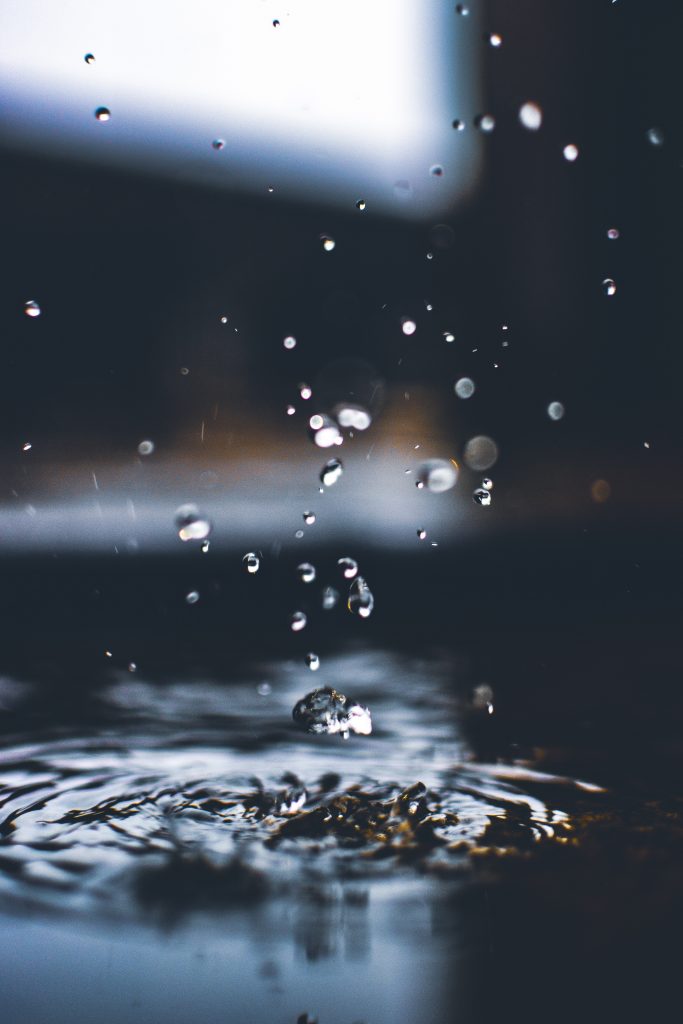 Because they are most often below grade, and because water seeks the path of least resistance, basements are one of the most common areas in homes affected by water intrusion. Whether it takes the form of a standing pool of water (or worse) or an increase in the humidity levels of your home, basement water intrusion can lead to significant structural problems for your home and threatening health issues for your loved ones. Being on the lookout for the most common signs of basement water intrusion can not only save you a lot of time and money, it can also save you from the headache of dealing with mold, mildew, and other biological growth.
Because they are most often below grade, and because water seeks the path of least resistance, basements are one of the most common areas in homes affected by water intrusion. Whether it takes the form of a standing pool of water (or worse) or an increase in the humidity levels of your home, basement water intrusion can lead to significant structural problems for your home and threatening health issues for your loved ones. Being on the lookout for the most common signs of basement water intrusion can not only save you a lot of time and money, it can also save you from the headache of dealing with mold, mildew, and other biological growth.
Surefire Signs of Basement Water Intrusion
- Pooled Water: The most obvious and easiest to spot sign of basement water intrusion is pooled water, often appearing after a major or long soaking rain storm. However, identifying the source of this pooled water may prove to be a bit of a puzzle. Sometimes, this water bubbles up from a crack in the floor, caused by an increase in hydrostatic pressure anytime the water table rises. These cracks are easily spotted culprits. More difficult to diagnose, though, are leaks originating from the cove joint, which is where your basement floor meets your basement walls. Often during heavy rains, water will seep up through this joint because water collects under the basement floor and walls. But the most common cause for pooled water in your basement will be water finding a way in through vertical cracks in the foundation, which are caused by your foundation settling or lateral pressure (the force exerted by the earth pushing against your foundational walls).
- Efflorescence: A white, powdery substance seen on unsealed surfaces, efflorescence appears as a result of water seeping through masonry and leaving behind salt and mineral deposits on unfinished surfaces. Not directly water itself, efflorescence lets you know water was present. And unless mitigating steps have been taken to prevent water from coming back, you can be certain efflorescence not only points to past water intrusion, but also promises future water intrusion.
- Mold and Mildew: Mold thrives in an environment where the humidity levels reach 55% or higher. When your basement is experiencing water intrusion seepage, these levels are easily reached. If you notice a funky smell or see the visible signs of mold growth, it is a surefire sign that you have basement water intrusion problems.
- Surface Staining:The two most prevalent types of surface staining associated with basement water intrusion are discolored floors or rust stains on your basement’s metal surfaces. Floor discoloration could be a sign of past water absorption, such as pooled water that has been reabsorbed by your foundation floors. Rust stains are typically found on the metal surfaces in your basement, most often iron or steel support beams, and are a surefire indication of moisture or increased humidity levels in your basement.
Basement Water Intrusion Solutions
Because many of the basement water intrusion problems are caused by hydrostatic and lateral pressure, an important place to start looking for solutions is in finding ways to relieve these pressures against your home’s foundation. Depending on your home’s specific pressure issues, solutions to these pressure problems will typically involve finding ways of improving the drainage system around your home. This may include installing drainage tiles or even diverting storm water further away from your home.
Keeping up with gutter and downspout maintenance is an important factor in keeping water away from your foundation. Gutters are meant to drain your roof and direct water through your home’s storm drainage system away from your home’s foundation. If the gutters are not maintained, rainwater will pour over the sides of your gutters, allowing it to collect around the foundation of your home, increasing the lateral pressure exerted against your foundation walls and increasing the likelihood of basement water intrusion. Equally important is ensuring the grade around your home is properly sloped to divert rainwater away from your foundational walls.
Most importantly, if you find yourself dealing with basement water intrusion, you want to be sure to have it properly mitigated by a licensed professional who can ensure your loved ones’ safety as they rid your home of hazardous mold and mildew spores.
Are you dealing with basement water intrusion? Contact Aapex Construction & Restoration today to begin restoring your home to a safe, dry, livable space. Wall to wall, we do it all!

